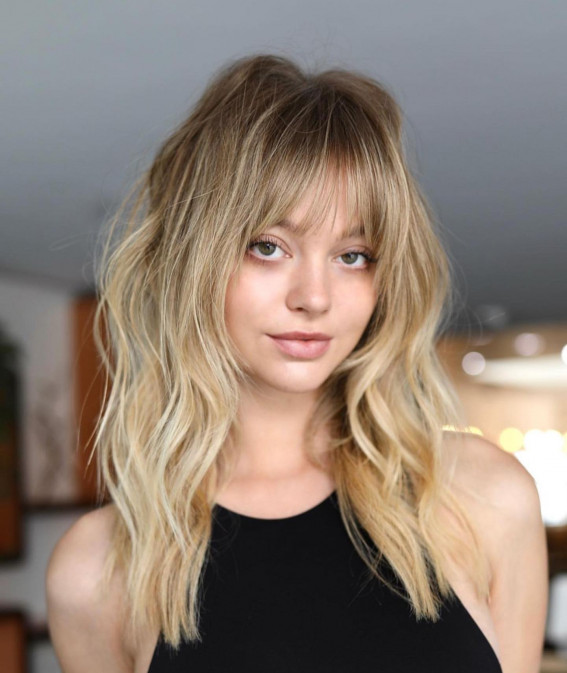Diy Shaggy Layers: The Ultimate Guide To Cutting Your Own Hair
Here are some additional tips for cutting your own shaggy layers:
- If you have thin hair, you'll want to create more layers to add volume.
- If you have thick hair, you can create fewer layers to avoid making your hair look too heavy.
- You can use a razor to create a more textured look.
- If you're not sure where to start, you can use a picture of a shaggy haircut that you like as a reference.
Are you looking for a way to add some texture and volume to your hair? If so, you might want to consider trying a shaggy layered haircut. This type of haircut is characterized by its uneven layers that create a tousled, carefree look.
If you're thinking about giving a shaggy layered haircut a try, but you're not sure how to do it yourself, there are plenty of resources available online. Hairstyle Glow Beauty has a great article that walks you through the process step-by-step.
In the article, you'll learn how to assess your hair type and texture, how to choose the right products, and how to actually cut your hair. The article also includes some helpful tips for styling your shaggy layered haircut.
So what are you waiting for? Head over to Hairstyle Glow Beauty today to learn more about "diy shaggy layers"!
FAQ of diy shaggy layers
Q: What are shaggy layers?
A: Shaggy layers are a type of haircut that features long, wispy layers that add volume and texture to the hair. They are typically cut with a razor or thinning shears to create a soft, undone look.
Q: How do I cut shaggy layers at home?
A: Here are the basic steps on how to cut shaggy layers at home:
- Wash and condition your hair.
- Blow-dry your hair until it is mostly dry.
- Section your hair into four equal parts.
- Start cutting the layers at the bottom of your hair and work your way up.
- Cut the layers with a razor or thinning shears to create a soft, wispy look.
- Blend the layers together so that they look natural.
- Style your hair as desired.
Q: What type of hair is best for shaggy layers?
A: Shaggy layers can work well on most hair types, but they are best suited for medium to thick hair. Fine hair may not have enough volume to support the layers, while very curly hair may be difficult to cut evenly.
Q: How do I style shaggy layers?
A: There are many ways to style shaggy layers. Here are a few ideas:
- Use a texturizing spray or mousse to add volume and texture to your hair.
- Blow-dry your hair with a round brush to create waves or curls.
- Use a flat iron to straighten your hair for a more polished look.
- Pin back your bangs for a more casual look.
Q: What are the pros and cons of DIY shaggy layers?
A: The pros of DIY shaggy layers include:
- It is a relatively easy haircut to do at home.
- You can save money by cutting your own hair.
- You can get the exact look you want.
The cons of DIY shaggy layers include:
- It can be difficult to cut your own hair evenly.
- You may not be able to achieve the same look as a professional haircut.
- If you make a mistake, it can be difficult to fix.
Image of diy shaggy layers
- Long shaggy layers with blunt ends. This is a classic shaggy haircut that is easy to maintain. The layers are long and blunt, which gives the hair a lot of volume and movement.

- Medium shaggy layers with wispy ends. This is a more modern take on the shaggy haircut. The layers are shorter and wispier, which gives the hair a more textured and edgy look.

- Short shaggy layers with face-framing layers. This is a great style for shorter hair. The layers are short and choppy, which gives the hair a lot of volume and definition. The face-framing layers help to frame the face and make it look more symmetrical.

- Shaggy layers with bangs. Bangs are a great way to add some personality to a shaggy haircut. You can choose from a variety of bang styles, such as blunt bangs, side-swept bangs, or curtain bangs.

- Shaggy layers with waves. Waves are a great way to add some movement and texture to a shaggy haircut. You can create waves with a curling iron or by using a salt spray.

- Shaggy layers with highlights. Highlights are a great way to add some dimension to a shaggy haircut. You can choose from a variety of highlight colors, such as blonde, caramel, or copper.

- Shaggy layers with lowlights. Lowlights are a great way to add some depth to a shaggy haircut. They can help to create the illusion of thicker hair.

- Shaggy layers with balayage. Balayage is a great way to add some natural-looking highlights to a shaggy haircut. The highlights are blended seamlessly into the hair, creating a very dimensional look.

- Shaggy layers with ombré. Ombré is a great way to add some drama to a shaggy haircut. The hair is dyed in a gradual blend of two or more colors, creating a very striking look.

Post a Comment for "Diy Shaggy Layers: The Ultimate Guide To Cutting Your Own Hair"